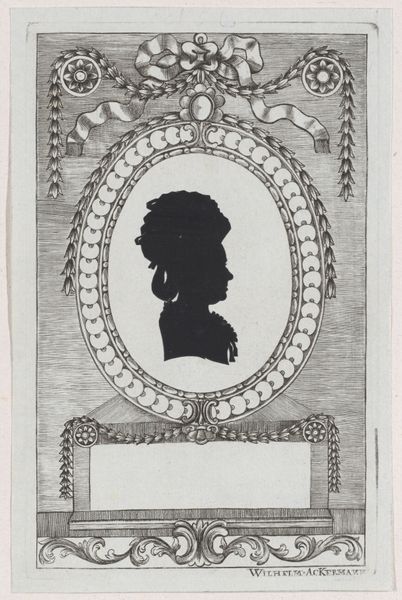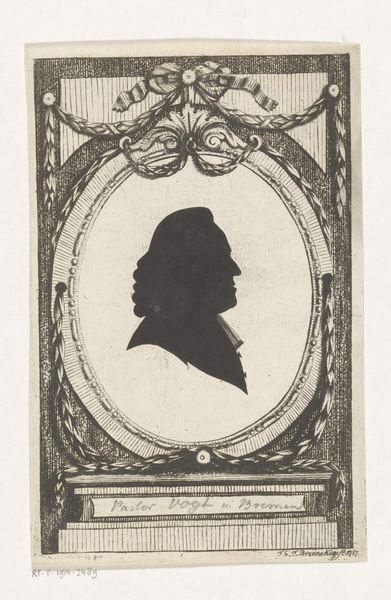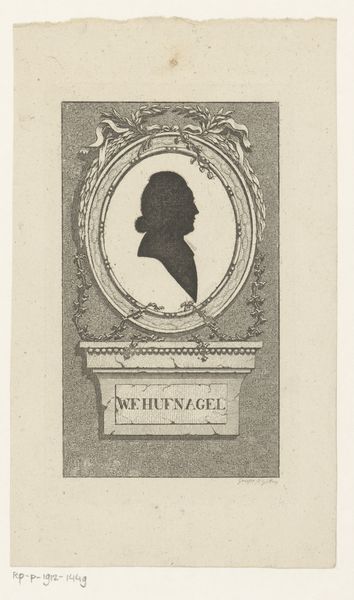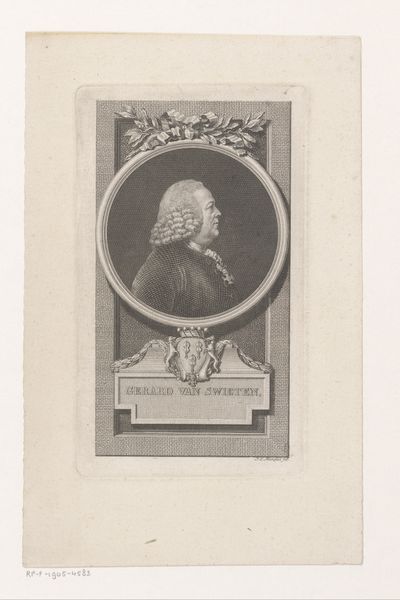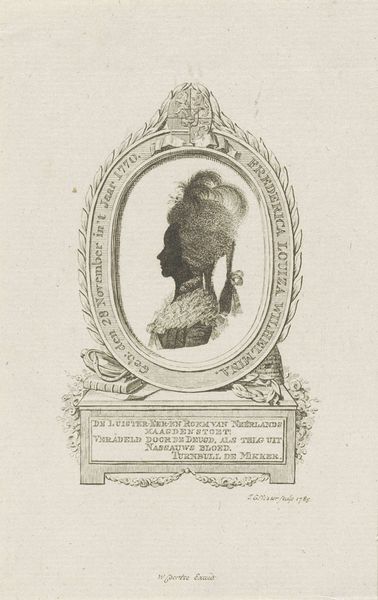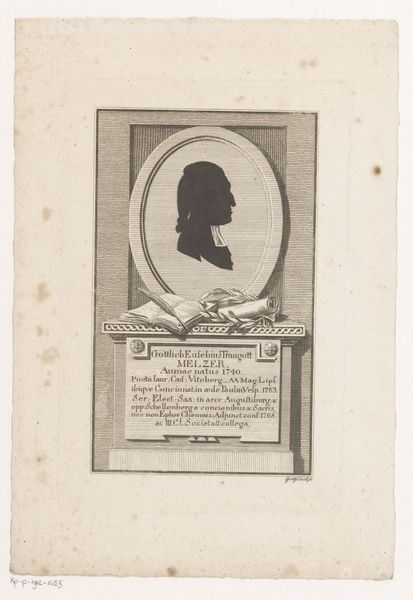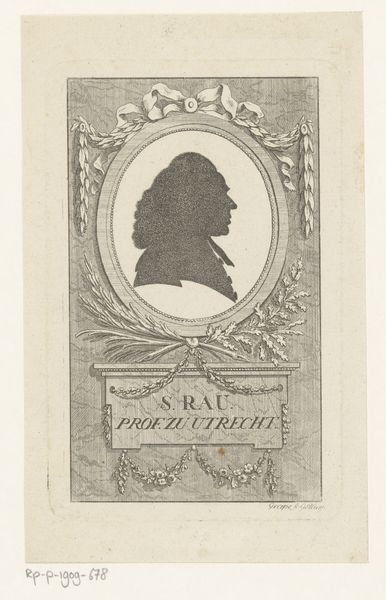
print, engraving
#
portrait
#
neoclacissism
# print
#
geometric
#
engraving
Dimensions: height 146 mm, width 84 mm
Copyright: Rijks Museum: Open Domain
Curator: Here we have Franz Hegi's "Silhouetportret van Ernestine Christine Reiske," dating sometime between 1784 and 1850. It’s currently held in the Rijksmuseum. Editor: My first impression is its starkness, a beautiful profile rendered in the most economical way. The black silhouette is so dramatic against the pale background. Curator: It’s a neoclassical portrait, precisely rendered as an engraving, which speaks volumes about the means of image production at the time. The crisp lines, the controlled gradation—it suggests a deliberate and rather laborious process. Editor: Absolutely. It also raises the question of accessibility. Was this kind of portraiture a means of memorializing and ennobling middle-class individuals? This method offered a cost-effective approach in comparison to oil painting. This silhouette emphasizes craft production as an act of image-making. Curator: It adheres to the neoclassical style so perfectly with its geometric composition—oval within a rectangle—the balance, the restraint, it evokes a sense of order and intellectualism. What do you think about the decorations added? I see the vine motif along the top. Editor: Yes, they introduce another element. The inclusion of these seemingly natural elements alongside the geometrical frame adds depth to the representation and enriches its value. However, it could also highlight that, although meant to signal a timeless value, it is indeed limited to certain conditions and will fade and erode in time. Curator: The interplay of these precise shapes generates a sense of contained energy; the contrast between positive and negative space emphasizes the flatness and also draws attention to form, specifically the form of this remarkable woman and her fashionable hairstyle of the time. Editor: Considering the materials and processes involved really allows me to view the historical period and appreciate how art forms serve to record culture, value, and means of production and consumption. Curator: Yes, for me, the elegance lies within the careful consideration of form and the relationships created between shapes and their surroundings. It becomes more than a simple portrait. Editor: This piece encourages me to consider artmaking and distribution, not just as aesthetic expression, but also a means of social access.
Comments
No comments
Be the first to comment and join the conversation on the ultimate creative platform.

